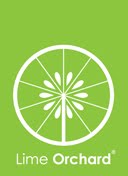This plant boasts 101 uses including offering effective treatment for minor burns, cuts, eczema and for reducing inflammation. The bottom stalk of aloe vera provides a soothing balm which can be directly applied to the skin. Aloe vera can also be taken internally as an aloe vera juice to treat digestive problems, ulcerative colitis, chronic constipation and poor appetite.
2. Great Burdock
This stunning plant with its purple and green thorny flowers, is also known as Edible Burdock or Lappa Burdock and is used as a root vegetable. Referred to in traditional medicine, the Great Burdock is used as a blood purifying agent, a diuretic and a diaphoretic. Other uses for this medicinal plant include boils, rashes, bruises, burns, acne, ringworm and bites.
3. Pot Marigold
Pot Marigold can help heal bites, stings, sprains, sore eyes, wounds and even varicose veins. When taken internally, this medicinal plant can be used to treat chronic infections and fever.
Chamomile can help treat more than 100 separate ailments and conditions including the common cold, digestive problems, diarrhea, eczema, gastrointestinal conditions, toothache, earache, shoulder pain and basic wounds.
5. Echinacea
The legendary healing powers of the Echinacea plant make it a handy medicinal plant to include in the garden. It has a wide array of uses, including the treatment of sores, burns, wounds, allergy relief, insect bites, stings and snakebites. It also has the ability to help relieve allergies by strengthening the immune system.
6. Great Yellow Gentian
This medicinal plant is actually a bitter herb which is used in traditional medicine, and its main function includes the treatment of digestive problems. It also aids the relief of exhaustion from chronic diseases, by stimulating the gall bladder and liver while at the same time strengthening the body.
7. Tea Tree
Renown for its healing properties, tea tree oil comes from the leaves and twigs of the tea tree plant. It has a great many uses, including the treatment of acne, athlete’s foot, warts, insect bites, cold sores, minor burns, thrush and chronic fatigue syndrome.
The remedial properties of Peppermint have been well documented. Naturally rich in vitamins A and C and manganese, it helps reduce a number of symptoms including irritable bowel syndrome, upset stomachs, fevers, flatulence and spastic colon.
9. Ginseng
Ginseng is hugely popular in eastern countries but is being increasingly recognized in the UK for its ability to promote general health (instead of just being useful for a particular type of ailment.) It’s the root of the ginseng which is particularly useful in relaxing the nervous system. It also helps reduce cholesterol levels, improve your immune system and stamina, and helps treat lack of appetite and sleep disorders.
10. Sage
Sage is a great salve for insect bites, skin infections, gum infections and mouth infections. It can also help with indigestion, flatulence, depression and even menopausal problems.

No comments:
Post a Comment